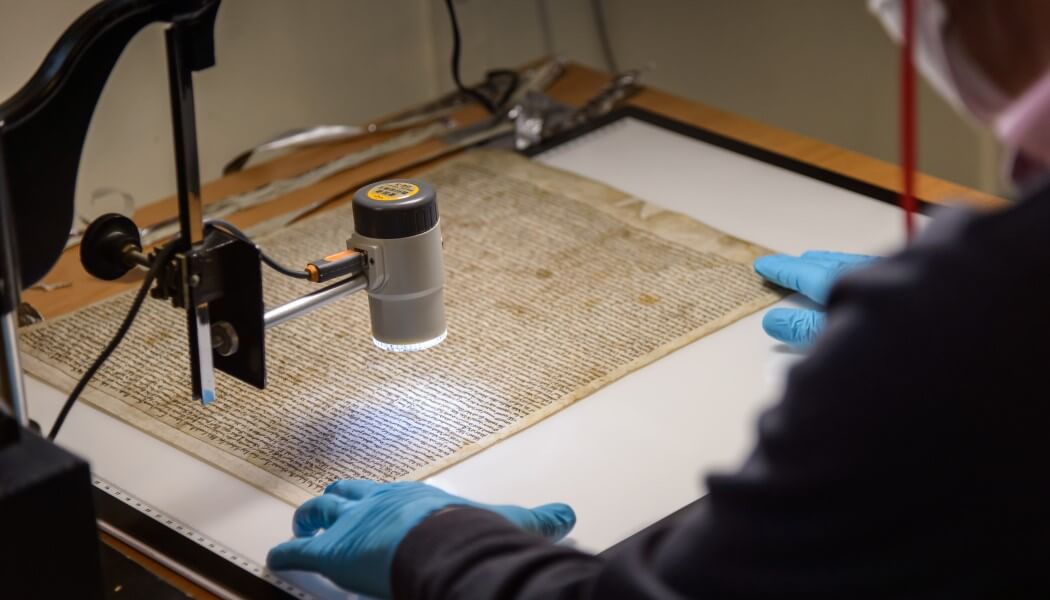Steven Avery
Administrator

Conservation and Care of Salisbury’s 1215 Magna Carta - Museums + Heritage Advisor
This year marks the 800th anniversary of the signing of Magna Carta and at Salisbury Cathedral Archivist Emily Naish and Chris Woods, Director of the National Conservation Service have been working on its first full condition inspection. Here they report back to M+H Advisor on the...
Protecting the parchment
Magna Carta is written on sheepskin parchment. In addition to the normal concerns of the effects of extremes of temperature, humidity and light, parchment has a greater tendency than paper to expand and contract on its own thus putting stress on the applied ink. Therefore with a parchment document such as Magna Carta the potential instability of the ink is a major concern. After 800 years the parchment itself is susceptible to irreversible damage should it get too warm and to rapid deterioration if wet. If too damp, parchment is a rich source or nutrients for mould and bacteria resulting in catastrophic damage. The ink is unstable in humid conditions and will fade in light with an ultra-violet content (such as sunlight) and if too bright for sustained periods. Taken together, these vulnerabilities mean that Magna Carta must be kept at a stable, moderate humidity, cool temperatures and low light levels with no UV if it is to be preserved for future generations.
